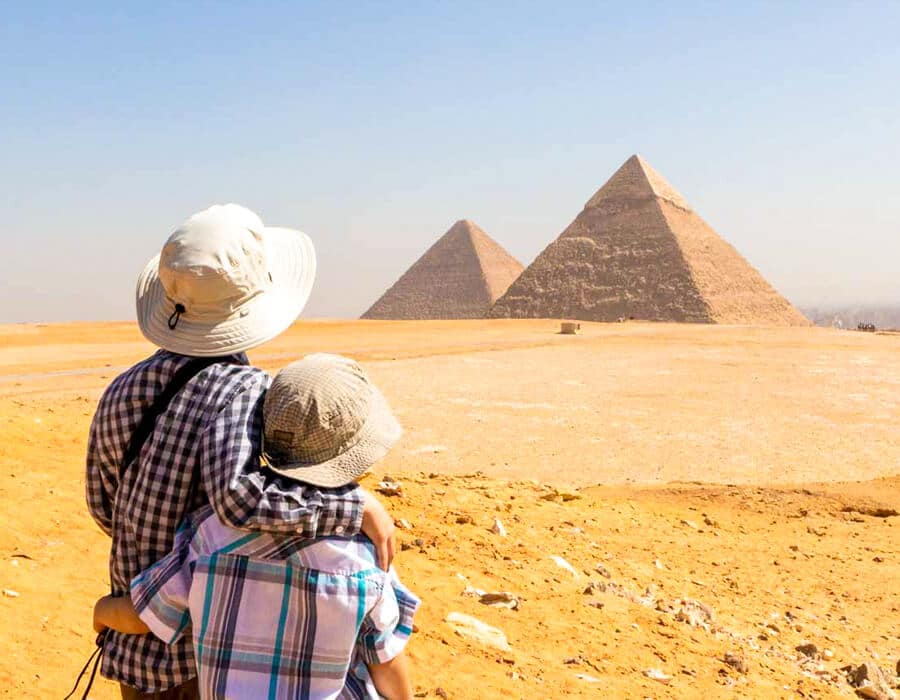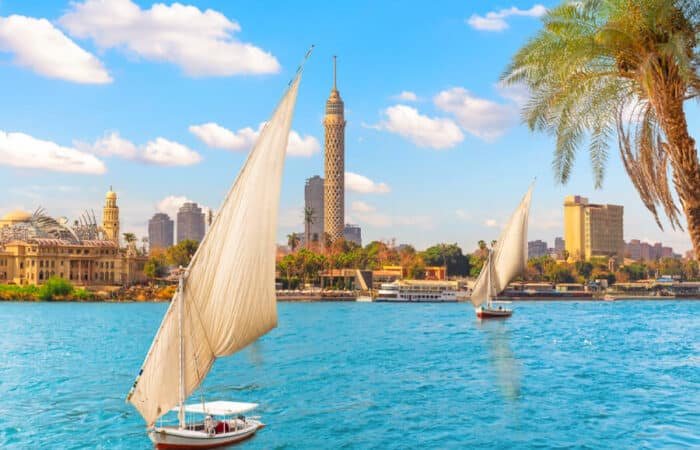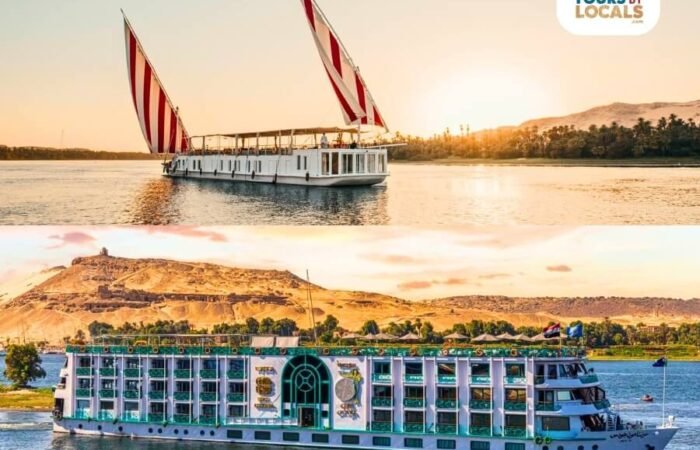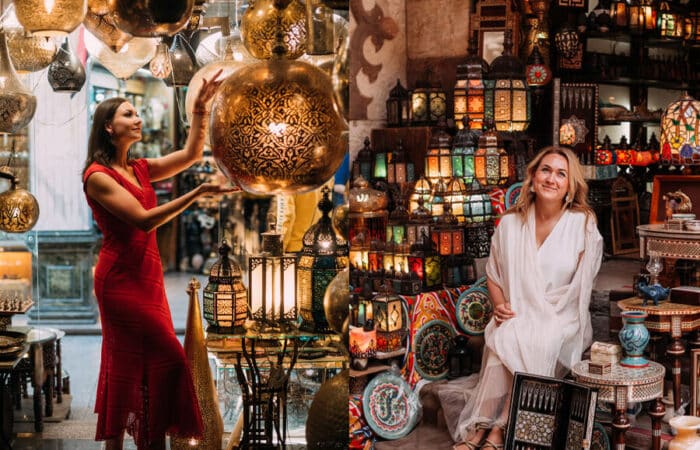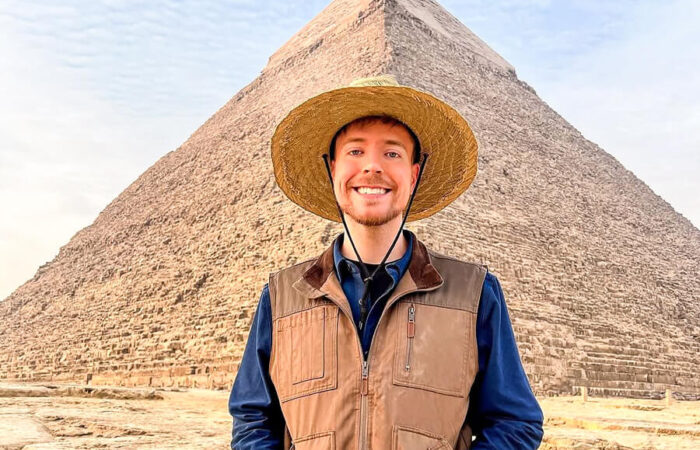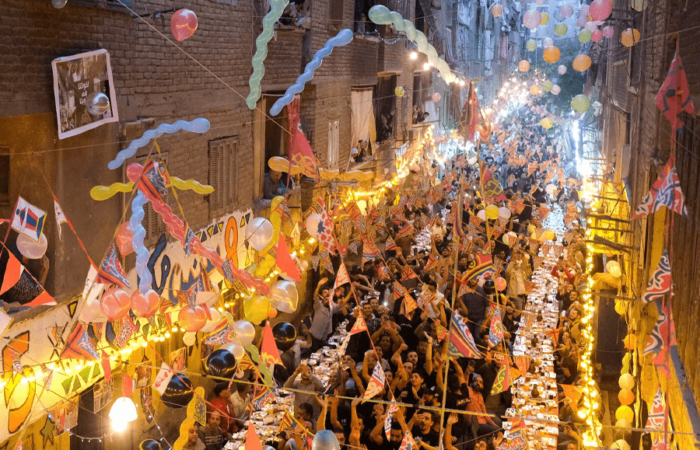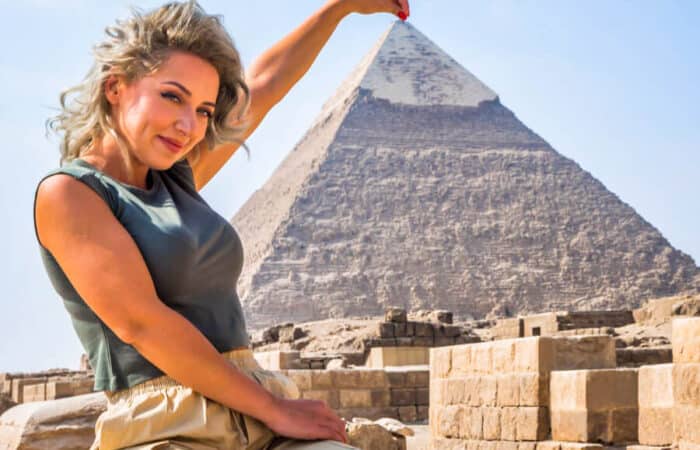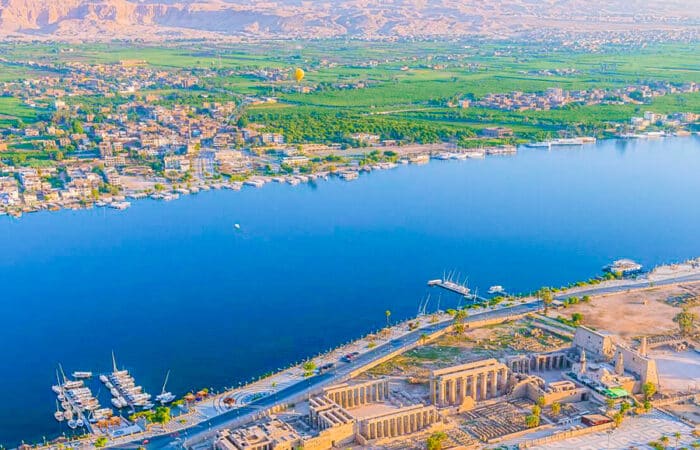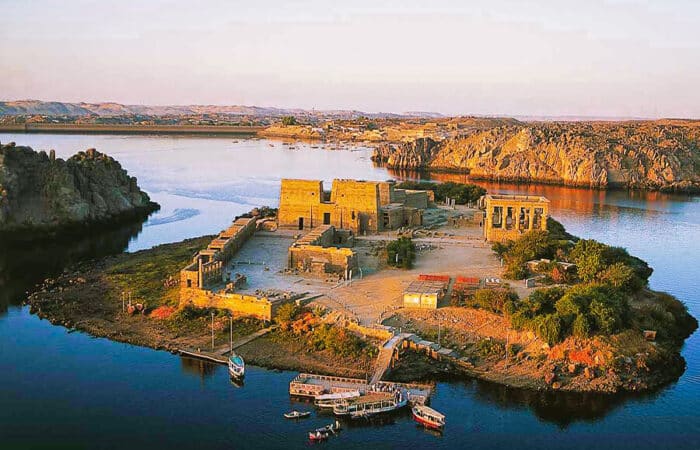Egypt—where history and wonder collide! Whether you’ve dreamed of standing before the towering Pyramids of Giza or wandering the ancient temples of Luxor, this country promises an experience like no other. In 2025, Egypt will remain a top destination for travelers who seek a deep connection to the past.
This article highlights Things to do in Egypt, including the most famous 10 historical sites in Egypt that cater to every traveler’s curiosity. From grand structures to hidden wonders, these sights tell the tale of a civilization that shaped history. Let’s dive into your ultimate guide to Egypt’s top historical treasures!
Key Takeaways:
- Egypt is home to world-renowned historical landmarks, perfect for travelers in 2025.
- Explore iconic sites like the Great Pyramids and lesser-known treasures.
- Discover practical tips for visiting each location for an enriching experience.
- Learn about the cultural and historical significance of these sites.
- Plan your perfect Egyptian itinerary with this comprehensive guide.
Why Should You Visit Historical Places in Egypt?
Visiting Egypt’s historical sites is like stepping into a living time machine. Few places on Earth offer such a vivid connection to ancient civilizations, where every monument, tomb, and temple tells a story of human achievement, spirituality, and resilience. From the awe-inspiring Great Pyramids of Giza—one of the Seven Wonders of the Ancient World—to the intricate carvings in the Valley of the Kings, Egypt’s history isn’t just something you read about; it’s something you feel.
Egypt’s historical landmarks are more than just ancient relics. They’re symbols of innovation, like the Step Pyramid of Saqqara, the first pyramid ever built, and the engineering marvel of the Abu Simbel Temples, relocated stone by stone to preserve them. These places are windows into how people lived, worshiped, and envisioned eternity thousands of years ago.
But it’s not just the history—it’s the experience. Imagine cruising the Nile as pharaohs once did or walking through the towering columns of Karnak, surrounded by whispers of the past. Visiting these sites connects you to the essence of humanity’s journey, making it not just a trip, but a profound, unforgettable adventure.
Key Highlights of Each Site
| Site | Highlight |
| Great Pyramids of Giza | Iconic Sphinx and Pyramids; perfect alignment photos |
| Valley of the Kings | Tombs of Tutankhamun and Ramses VI |
| Abu Simbel Temples | Four colossal statues, solar alignment event |
| Karnak Temple | Hypostyle Hall with 134 massive columns |
| Saqqara | Step Pyramid, first large-scale stone structure |
| Islamic Cairo | Citadel of Saladin, Mosque of Muhammad Ali |
| Philae Temples | Temple of Isis, stunning island location |
| Alexandria | Catacombs, Citadel of Qaitbay, Greek-Roman heritage |
| Temple of Edfu | Statue of Horus, best-preserved ancient carvings |
| Siwa Oasis | Temple of the Oracle, Cleopatra’s Bath |

Top 10 Historical Sights in Egypt
1- The Great Pyramids of Giza and the Sphinx
The Great Pyramids of Giza and the Sphinx are Egypt’s ultimate show-stoppers. These towering monuments have stood tall for over 4,500 years, silently watching as civilizations rose and fell. The three pyramids—Khufu (the Great Pyramid), Khafre, and Menkaure—aren’t just piles of stone; they’re engineering marvels from a time when tools were primitive yet imagination was limitless. And then there’s the Sphinx, with its lion’s body and enigmatic human face, guarding the site like an eternal sentinel.
If you want to avoid the selfie-stick chaos (we’ve all been there!), visit early in the morning—like at sunrise. Not only will you beat the crowds, but the soft golden light makes for jaw-dropping photos. Late afternoons can be quieter too, especially on weekdays, but mornings win for the dreamy lighting.
- Fun tip for photography: The Sphinx and Pyramids align perfectly for those classic “Sphinx in the foreground, Pyramids in the background” shots. For something artsier, snap from the southeast corner—it gives you an angle that most people miss. And don’t forget to pack water and wear comfy shoes. Exploring the site is like stepping into history but with a touch of a workout.
- Pro tip: Hire a guide if you can. Their stories will make these ancient stones come alive!
2- The Valley of the Kings in Luxor
Imagine walking into a sun-scorched valley, knowing that beneath your feet lie the burial chambers of Egypt’s most legendary pharaohs. That’s the Valley of the Kings—a must-visit site in Luxor Egypt that feels like stepping into a history book. For over 500 years, this hidden necropolis housed the tombs of rulers like Ramses II and, of course, the famous boy king, Tutankhamun.
If you’re short on time, Tutankhamun’s tomb is a can’t-miss. It’s smaller than you might expect, but seeing his actual sarcophagus and learning about the treasures found there? Goosebumps. Other highlights include the tomb of Ramses VI, with its vibrant celestial ceiling art, and Seti I, often called the most beautifully decorated tomb in the valley.
Preservation is a big deal here—many tombs are delicate and have restricted access to protect their stunning hieroglyphics and carvings.
- Fun fact: Those vibrant colors you’ll see? Some are original and over 3,000 years old! To make the most of your visit, arrive early before the desert heat kicks in, and consider the extra ticket for the photography pass.
3- Abu Simbel Temples
The Abu Simbel Temples are more than just massive stone structures—they’re a testament to human ingenuity and determination. Built by Ramses II over 3,000 years ago, these temples were carved directly into the rock to honor the gods and, of course, Ramses himself. But here’s the jaw-dropper: in the 1960s, the entire site was relocated piece by piece to higher ground to save it from the rising waters of Lake Nasser. Imagine slicing up a mountain and reassembling it like a puzzle—mind-blowing, right?
The larger temple is dedicated to Ramses and features four colossal statues of the pharaoh himself, each over 65 feet tall. Look closely, and you’ll see intricate carvings that depict scenes of Ramses’ victories and his connection to the gods. Inside, the walls are covered with detailed reliefs, but the real magic happens twice a year during the solar alignment—February 22 and October 22—when sunlight illuminates the inner sanctuary. Talk about cosmic architecture!
- Pro tip: Visit early morning or late afternoon to catch the golden hour glow on the statues and avoid the midday heat. Oh, and don’t forget your camera—this place is Insta-gold!
4- Karnak Temple Complex
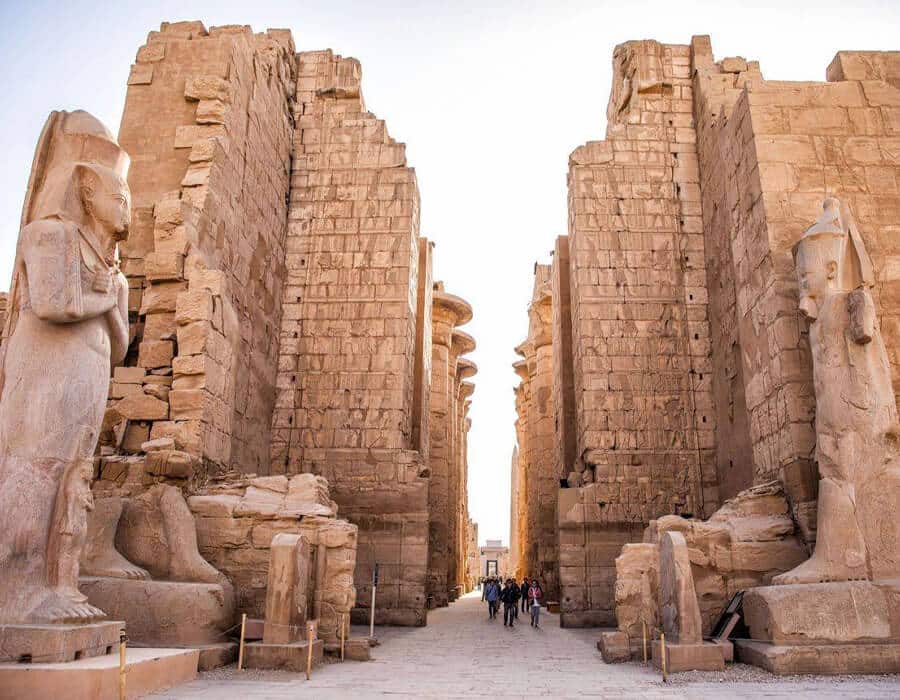
Step into the Karnak Temple Complex, and you’ll feel like you’ve stumbled into a world of giants. This is the largest religious building ever constructed, a sprawling site that was built and rebuilt over 2,000 years. It’s not just a temple; it’s a massive, open-air museum that tells the story of Ancient Egypt’s greatest rulers. Each pharaoh added their mark, resulting in a maze of towering columns, statues, and obelisks.
The Hypostyle Hall is the showstopper here. Picture 134 columns, each as tall as a four-story building, arranged in rows that seem to stretch endlessly. Fun fact: The carvings on the columns are so detailed you can still make out individual hieroglyphs thousands of years later! Don’t miss the Sacred Lake, where priests purified themselves, and the Obelisk of Hatshepsut, one of the tallest surviving obelisks in Egypt.
To tackle this sprawling site without feeling overwhelmed, start early—the complex is huge, and the midday sun can be brutal. Stick to the main pathways, but don’t be afraid to wander off and explore smaller sections for hidden details. Wear good walking shoes and bring a water bottle. And if you want to immerse yourself, hire a guide—they’ll help decode the layers of history etched into every wall.
5- Saqqara: The Step Pyramid of Djoser
Welcome to Saqqara, the birthplace of pyramid building! This is where it all started with the Step Pyramid of Djoser, built around 2,700 BCE. Designed by the genius architect Imhotep, this pyramid was the first large-scale stone structure in history and paved the way (literally) for the grand pyramids of Giza. Instead of smooth sides, its six tiers “step” upward, showcasing the experimental beginnings of Egypt’s architectural evolution.
So, what makes Saqqara different from Giza? First, it’s quieter—far fewer tourists, which means you can soak in the history without the crowds. Second, Saqqara isn’t just about one pyramid. It’s part of a massive necropolis filled with tombs, temples, and intricate carvings that reveal what life and death looked like in Ancient Egypt. Don’t miss the Serapeum, a burial site for sacred Apis bulls, or the vivid wall paintings in the Tomb of Ti, depicting everyday scenes.
- Pro tip: Visit Saqqara before Giza to see how the pyramid-building craft evolved. Wear sturdy shoes—the uneven paths are part of the charm—and bring a guidebook or hire a guide. There’s so much history here that every stone feels like it has a story to tell!
6- Islamic Cairo and the Citadel of Saladin
Step into Islamic Cairo, and you’ll find yourself surrounded by a rich tapestry of history and architecture. This UNESCO World Heritage site is a maze of ancient mosques, madrasas, and bustling souks that transport you to a time when Cairo was the beating heart of the Islamic world. At the center of it all is the Citadel of Saladin, a fortress built in the 12th century to defend against Crusaders. Perched on a hill, it offers breathtaking views of the city—on a clear day, you might even catch a glimpse of the Pyramids!
Inside the Citadel, the star attraction is the Mosque of Muhammad Ali, often called the Alabaster Mosque for its gleaming white walls. Its Ottoman-style domes and minarets dominate the skyline, and the interior is just as stunning, with intricate designs and soaring ceilings that make you feel small in the best way. Don’t forget to step into the courtyard to admire the fountain and take in panoramic views of Cairo City.
- Pro tip: Arrive early to beat the crowds and explore the surrounding area, including the nearby Sultan Hassan Mosque and Al-Rifa’i Mosque. And don’t rush—wandering through Islamic Cairo’s streets, filled with history and the aroma of spices is an experience in itself. Keep your camera ready; every corner is a photo op!
7- The Temples of Philae
The Temples of Philae on Philae Island isn’t just a breathtaking monument; it’s a place steeped in myth and history. This sacred site, dedicated to the goddess Isis, was a center of worship for thousands of years. But here’s the twist: the temple you see today isn’t in its original location. In the 1960s, it was painstakingly moved piece by piece to higher ground to save it from submersion caused by the Aswan High Dam. Can you imagine dismantling an ancient temple stone by stone? That’s a dedication to preserving history!
To reach Philae Island, you’ll need to hop on a boat from Aswan’s Marina, and honestly, that short ride adds to the magic. Arrive early for fewer crowds, and if you can, catch the Sound and Light Show in the evening—it’s like the temple comes alive with stories from the past.
While exploring, look out for carvings that depict scenes of Isis resurrecting Osiris or protecting her son Horus. The details are exquisite. Don’t rush; the peaceful atmosphere of the island, surrounded by the Nile, is an experience to savor. Oh, and don’t forget comfy shoes—it’s all about walking and soaking in the awe!
8- Alexandria’s Historical Treasures
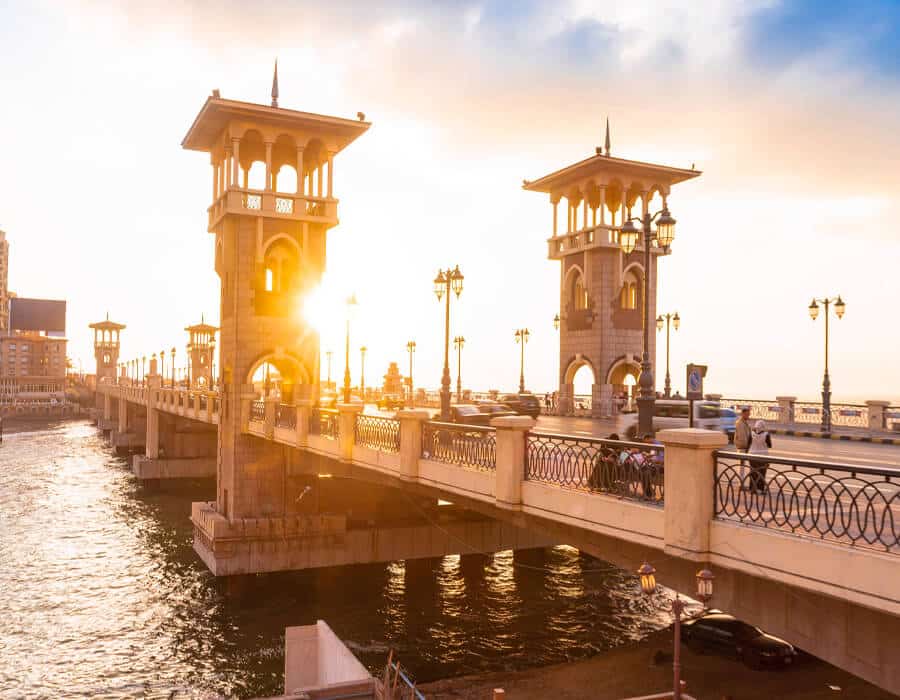
Alexandria City, Egypt’s Mediterranean gem, is a city where Greek and Roman heritage intertwines with Egyptian history. It’s a treasure trove of ancient wonders, and two must-visit highlights are the Catacombs of Kom El Shoqafa and the Citadel of Qaitbay.
The Catacombs of Kom El Shoqafa are an eerie yet fascinating underground marvel. This mix of Roman, Greek, and Egyptian styles features intricate carvings and tombs that tell stories of Alexandria’s diverse history. Don’t miss the Hall of Caracalla, where you’ll find reliefs blending Roman gods with Egyptian imagery—talk about cultural fusion! Pro tip: The catacombs can be humid and a bit steep, so wear sturdy shoes and bring a flashlight for a better look at the details.
The Citadel of Qaitbay, on the other hand, is a fortress with stunning sea views. Built-in the 15th century on the site of the ancient Lighthouse of Alexandria, it’s a must-see for history and architecture buffs. Stroll along the ramparts and imagine the bustling trade city it once guarded.
To fully experience Alexandria’s magic, combine these visits with a stroll along the Corniche and stop by a café for a classic Mediterranean tea break. Trust me, Alexandria’s vibe is unlike anywhere else in Egypt!
9- Temple of Edfu: Dedicated to Horus
The Temple of Edfu, dedicated to Horus, the falcon-headed god of protection and power, is one of the best-preserved temples in all of Egypt. As you approach its towering entrance, the grandeur of the massive pylons covered with carvings of Horus’s triumphs instantly grabs your attention. Built between 237 and 57 BCE during the Ptolemaic era, this temple offers a unique glimpse into the fusion of Egyptian and Greek influences.
Inside, the Great Hypostyle Hall is a show-stopper. Its intricately carved columns, depicting scenes of rituals and offerings, are a visual feast. One of the most fascinating features is the sanctuary, where the sacred barque of Horus once resided. Don’t miss the carvings along the outer walls—they detail the legendary battle between Horus and Seth, a tale of vengeance and justice that defined Egyptian mythology.
To make the most of your visit, arrive early or late in the afternoon to avoid the crowds and harsh sunlight. A guide can help bring the stories etched into the walls to life, but even without one, the sheer beauty of the temple is captivating. And don’t forget to snap a photo with the statue of Horus, standing guard at the temple entrance—it’s iconic!
10- Siwa Oasis and the Temple of the Oracle
Tucked away in the Western Desert, Siwa Oasis feels like stepping into a tranquil time capsule. This remote paradise is not only a feast for the eyes with its lush palm groves and crystal-clear springs but also a treasure trove of history. At its heart lies the Temple of the Oracle, an ancient site that once drew visitors from across the Mediterranean, including none other than Alexander the Great, who reportedly consulted the oracle here to confirm his divine lineage.
The temple itself, perched on a hill overlooking the oasis, is a fascinating ruin. While the structure has weathered centuries of desert winds, its sense of mystique remains intact. Pair your visit with a stroll through the surrounding area, where the fusion of Siwa’s natural beauty and historical charm comes alive.
To truly savor Siwa, combine historical exploration with its natural wonders. Float effortlessly in the salty waters of Lake Siwa, hike the Great Sand Sea, or relax by one of the bubbling springs like Cleopatra’s Bath. The blend of serene landscapes and rich history makes Siwa a destination that’s equal parts adventure and escape.
- Pro tip: Siwa is remote, so plan your trip with time to enjoy its slow, peaceful rhythm!
Practical Tips for Exploring Egypt’s Historical Sites
Whether you’re wandering the temples of Luxor or enjoying the quiet serenity of Siwa, a little preparation goes a long way in making your Egyptian adventure unforgettable!
Best Time to Visit Egypt’s Historical Sights
Best Time to Visit Egypt, Timing is everything when exploring Egypt’s wonders. The best months to visit are October through April, when temperatures are cooler and more manageable, especially in desert areas like Luxor and Giza. If you want to avoid peak tourist crowds, aim for early November or late February. For the ultimate experience, visit popular sites like the Pyramids of Giza or the Valley of the Kings early in the morning or late afternoon—this is when the lighting is magical for photography, and you’ll dodge the biggest crowds. Summer visits? Possible but prepare for extreme heat, especially in southern cities like Aswan.
Best Times to Visit Each Site
| Historical Site | Best Time | Reason |
| Great Pyramids of Giza | Sunrise or Late Afternoon | Fewer crowds, golden light for photos |
| Valley of the Kings | Early Morning | Cooler temperatures, fewer tourists |
| Abu Simbel Temples | Solar Alignment Days | Unique alignment event in Feb & Oct |
| Karnak Temple Complex | Morning or Evening | Avoid midday heat, enjoy quieter moments |
| Saqqara | Morning | Cooler weather, better for walking paths |
| Philae Temples | Evening (for the show) | Sound and Light Show adds depth to the visit |
| Alexandria | Mid-Morning | Best light for exploring Catacombs and Citadel |
| Temple of Edfu | Early Morning | Avoid crowds, enjoy detailed carvings |
| Siwa Oasis | Anytime (plan extra days) | Peaceful vibe, slower exploration pace |
Navigating Egyptian Culture and Customs
Egyptian Culture and Customs, Egyptians are known for their warm hospitality, but respecting local customs goes a long way. Dress modestly when visiting religious or rural areas—covering your shoulders and knees is appreciated. At mosques, remove your shoes and wear loose-fitting clothing. Tipping (baksheesh) is common, so keep small bills handy for guides, porters, or even restroom attendants. Learn a few Arabic phrases like “shukran” (thank you) or “sabah el-kheir” (good morning) to make a great impression. And don’t shy away from the markets—bargaining is part of the fun, but always do it with a smile!
Key Travel Tips for an Unforgettable Experience
- Guides Are Gold: Hire knowledgeable guides at major sites like Abu Simbel or Karnak. They’ll turn carvings into stories and hieroglyphs into adventures.
- Water, Always: Carry a reusable water bottle to stay hydrated, especially at open-air sites. Egyptian sun? It’s no joke.
- Tickets and Passes: Many attractions offer extras, like photography permits or access to special tombs (e.g., Tutankhamun’s). Research beforehand to budget accordingly.
- Comfortable Footwear: Ancient sites mean uneven terrain—sturdy walking shoes are a must.
- Local Cuisine: After all that exploring, indulge in local favorites like koshari or freshly baked baladi bread at a street-side café. It’s history for your taste buds!
FAQs About Egypt Historical Sights
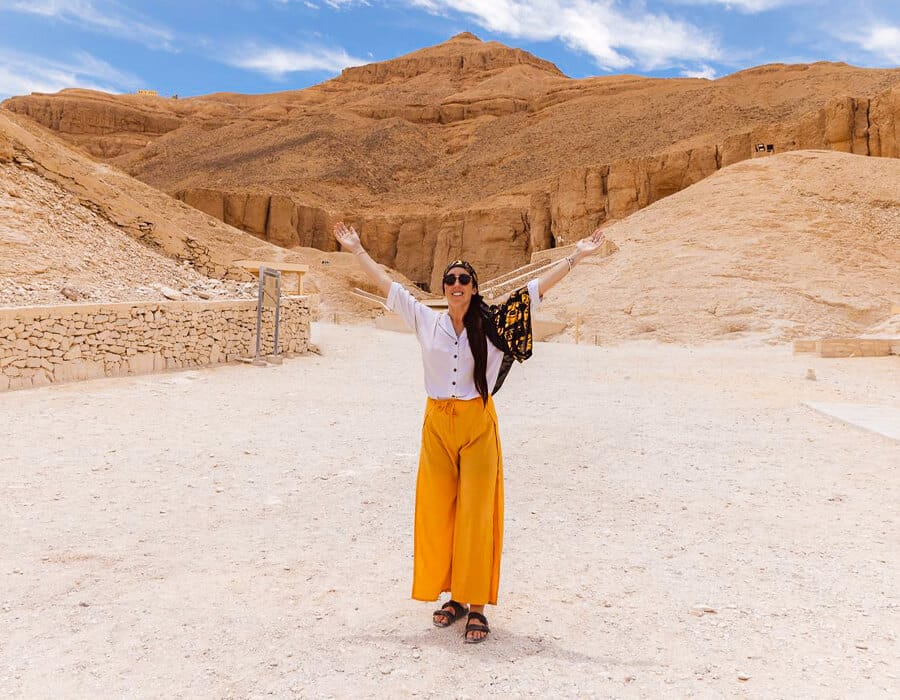
Do I need a guide for the Valley of the Kings?
A guide isn’t required to visit the Valley of the Kings, but it’s highly recommended. The tombs are rich with history and intricate carvings, and without a guide, you might miss the significance of what you’re seeing. Guides can explain the stories behind the hieroglyphs, the symbolism of the art, and the fascinating rituals of burial in Ancient Egypt. They’ll also help you make the most of your time by pointing out highlights, like the tombs of Tutankhamun or Ramses VI.
Is there an entrance fee for Abu Simbel?
Yes, visiting Abu Simbel requires an entrance fee, which varies for locals and international visitors. Additionally, there’s an extra charge if you want to take professional photography equipment inside. For the Sound and Light Show, there’s a separate ticket, and it’s worth booking in advance as it’s a unique experience that brings the temples’ history to life through narration, music, and lighting effects.
What is the best time to visit the Great Pyramids of Giza?
The best times to visit the Great Pyramids are early in the morning, around sunrise, or late in the afternoon. Early visits let you beat the crowds and enjoy the serene beauty of the pyramids bathed in soft light. Late afternoon visits are also quieter, and the golden hour lighting makes the structures even more magnificent. Avoid midday if you can, as it gets crowded and the heat can be intense, especially in the summer months.
How do I get to the Temples of Philae?
The Temples of Philae are located on an island and can only be reached by boat. Most visitors start their journey from the Marina in Aswan, where motorboats are readily available for hire. The short boat ride across the Nile is scenic and peaceful, adding to the experience. You might want to negotiate the boat price in advance, as rates can vary. Try visiting early in the day to enjoy the temple before it gets busy, or consider staying for the Sound and Light Show in the evening for a magical atmosphere.
Are the Catacombs of Kom El Shoqafa suitable for all visitors?
While the Catacombs of Kom El Shoqafa are a must-visit for history lovers, they can be challenging for some visitors. The steep, narrow staircases leading underground can be difficult to navigate, especially for those with mobility concerns. The air inside can feel humid, so it’s a good idea to wear light clothing and stay hydrated. Bringing a flashlight can also enhance your visit, as some areas aren’t well-lit, allowing you to see the carvings and details more clearly. If you’re unsure about accessibility, check with your tour operator in advance.
Conclusion of Egypt Historical Sights
Egypt in 2025 offers travelers a journey through time like no other. From the grandeur of the Pyramids to the quiet mysteries of Siwa, each site holds a story waiting to be discovered. Whether you’re visiting for the first time or returning to uncover more, these 10 historical sights will captivate your imagination and deepen your appreciation for this ancient land. Start planning your Egypt Trip today—because history is calling!
Don’t miss to check:
